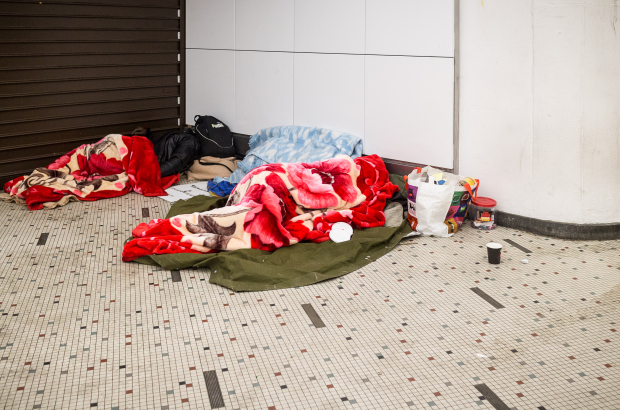- Daily & Weekly newsletters
- Buy & download The Bulletin
- Comment on our articles
200 volunteers take part in homeless 'census' in Brussels
A survey undertaken by aid organisation Bruss'Help to determine the number of homeless people in Brussels took place on Monday night between 23.00 and midnight.
The plan was to take a snapshot of the number of homeless people in the capital during a specific timeframe. Almost the entire Brussels region was covered in the 'census'. The territory had been divided into 70 zones, traversed by 200 volunteers who visited reception centres, emergency shelters, and squats, as well as counting people sleeping on the street.
Deborah Oddie, director of the L'Escale shelter, and Daan Vinck, head of the Hobo day centre, were among those taking part. "To be able to spot people in the most hidden corners, to go to the small squares, to look behind the bushes, it’s better to go by foot," she explained.
"The goal is to count the number of people but not to disturb them. In fact, we have nothing to offer tonight. We're only here to compile data," Daan Vinck added. The data they collected had to be as precise as possible, detailing whether the homeless person was a man, a woman, or a child, while estimating an age range. "Obviously, it's not easy, especially if people are rolled under the covers."
As well as gender and age, the workers took notes on the location of makeshift shelters and any distinctive signs '"to avoid counting the person twice, if others have met him half an hour before, in another area," explains Daan Vinck.
The count was undertaken at a particularly difficult time, with a curfew in place due to the ongoing coronavirus crisis. "It is true that the health crisis has profoundly changed the way homeless and poorly housed people live," said one volunteer. "Some people were able to find a place in a shelter during the crisis, but the number of places has been largely insufficient. It appears there are fewer people on the streets but that could be because they are hidden due to the curfew."
The operation was not limited to the street. Bruss'Help also compiled data collected from the various Brussels support structures, such as shelters and reception centres. "We have a fairly broad definition of what homelessness is,” another volunteer said. “It is based on a European typology that includes all the homeless and poorly-housed: people who are in inadequate housing, squats, unlicensed housing, religious buildings and also everybody who finds refuge in shelters or who are housed in emergency shelters."
In the previous count, more than 4,000 homeless and poorly housed people were counted in Brussels, of whom more than 700 were living on the street. Over the years, the phenomenon in Brussels has grown. The ultimate goal of the count and the report that will come out of it is to show the factors that lead to homelessness. "We know these are diverse: the political management of migration flows, the precariousness of the working classes, the increase in economic inequalities,” the volunteer says. “Homelessness and poor housing are just the tip of the iceberg."
For the first time, counts based on the Brussels model are also being carried out in Liège, Leuven, Namur, and Ghent, Bruss'Help explains. The King Baudouin Foundation will report the results from all these counts at the end of February.



















